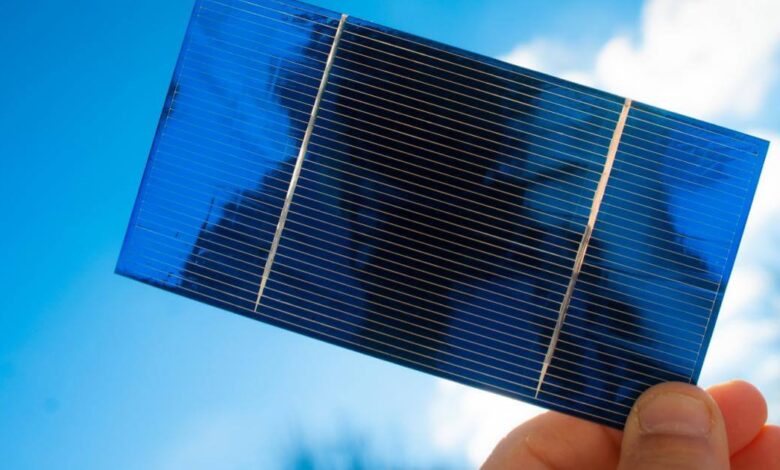Exploring Different Types of Solar Panels for Roof Replacement

Solar panels are an excellent option for homeowners switching to a more sustainable energy source. However, the type of solar panels you choose can impact your overall energy savings.
Different types of solar panels have unique advantages that make them a better fit for certain roofs than others. Luckily, there are plenty of options available to you.
Monocrystalline
Monocrystalline solar panels are made from a single silicon crystal grown in a lab and formed into a cylinder shape called an ingot. These nuggets are then cut into thin discs called silicon wafers and shaved into an octagonal shape to eliminate wasted space and improve efficiency. This design allows the cells to fit together more easily and creates a more powerful panel.
They’re known for their high power conversion rates and long lifespan, and they can also produce more energy than polycrystalline or thin-film solar panels. They’re more expensive to purchase than another type of solar panel roof replacement, but they typically offer a quicker payback period.
The manufacturing process for these panels involves injecting phosphorus with nitrogen into the wafers at 1652 degrees Fahrenheit to create a p-type layer and increase their electricity generation capability. This is followed by applying a highly-conductive silver alloy on each wafer, which increases the panel’s overall conductivity.
This type of solar panel is also the most durable and resistant to damage from environmental factors, requiring little maintenance aside from regular cleaning with warm water and a soft cloth. They’re often installed in areas with more sunshine because they can absorb more sunlight than their polycrystalline and thin-film counterparts. In addition, these panels are black and blend in with more rooftops compared to polycrystalline solar panels, which are usually blue.
Polycrystalline
Polycrystalline solar panels use silicon to convert sunlight into electricity. Unlike monocrystalline solar panels, which contain single-crystal silicon, polycrystalline solar cells have multiple crystals that are melted together to create a square-shaped mosaic of silicon wafers. This is what gives polycrystalline solar panels their speckled appearance and bluish hue. They are typically cheaper than monocrystalline solar panels but still have high-efficiency ratings and can deliver homeowners a good return on investment.
Homeowners can pair polycrystalline solar panels with grid-tied systems to receive financial benefits from the federal tax credit. Depending on the available space on their roofs, they can also choose to install more polycrystalline solar panels for higher energy production and lower utility bills.
When choosing between mono and polycrystalline solar panels, a home’s energy consumption should be the biggest factor in determining which type is right for them. A higher efficiency rating means homeowners will need fewer panels to produce the same kilowatt-hours of electricity per month. This can help shorten the payback period, which is the time it takes for a solar panel system to pay back its initial upfront costs.
A solar power system includes solar panels, charge controllers, and inverters. The solar panels convert sunlight into DC electricity, and the inverter changes the DC electricity to AC.
Thin-Film
Thin-film solar panels deposit one or more thin layers (thin film or TF) of photovoltaic material onto a base, such as glass, plastic or metal. They are typically a few nanometers to a few microns thick—much thinner than the wafers used in conventional crystalline silicon PV systems, which can be up to 200 um wide. Popular thin-film technologies include cadmium telluride (CdTe), copper indium gallium diselenide (CIGS) and amorphous thin-film silicon (a-Si or TF-Si).
The biggest advantage of this type of PV technology is that it can be applied to many different roofing types, including standing seam metal roofs. This allows homeowners to add solar power without compromising their home’s or business’s aesthetics.
Unlike crystalline silicon, thin-film technology performs well in low-light conditions. This is because the materials used in these panels have a broad energy bandgap, meaning they can absorb more of the spectrum and generate more electricity.
Another benefit is that thin-film solar panels are cheaper than crystalline silicon. However, their price gap has narrowed as crystalline PV manufacturers ramped up production. Despite their lower cost, thin-film solar panels are less efficient than crystalline PV systems and require more rooftop space. Additionally, thin-film solar panels degrade more quickly, so they usually have shorter warranties than crystalline PV systems.
Solar Shingles
If you want to use solar panels for replacement, but your current roof is too damaged for a traditional roof system, consider a solar shingle or building integrated photovoltaics (BIPV). These shingles are designed to function as roofing and solar panels, giving homeowners a sleeker look while generating energy savings.
Most solar shingles are based on thin-film technology, although some incorporate monocrystalline silicon cells. Thin-film shingles are less common than mono or polycrystalline panels and get their name from the way they’re produced: layers of semiconductor materials like silicon, cadmium telluride, and copper indium gallium selenide are rolled into a film, similar to the way a regular solar panel is made.
Solar shingles typically last 20 years with warranties covering power production and durability. They require a larger installation area than standard solar panels and may need to be replaced sooner as they age.
A few companies are experimenting with integrating solar shingles into conventional roofing systems. GAF Energy offers the Solar Shingle Plus system that can be used on asphalt and wood shingle roofs, and SunTegra has a system that can be installed on flat or low-sloped roofs. Luma Solar is one of the most popular solar shingle companies in the US and advertises its products as beautiful and high-performing. Its solar shingles are designed to blend in with your roof and include inactive shingles to help reduce the appearance of the solar panels.





